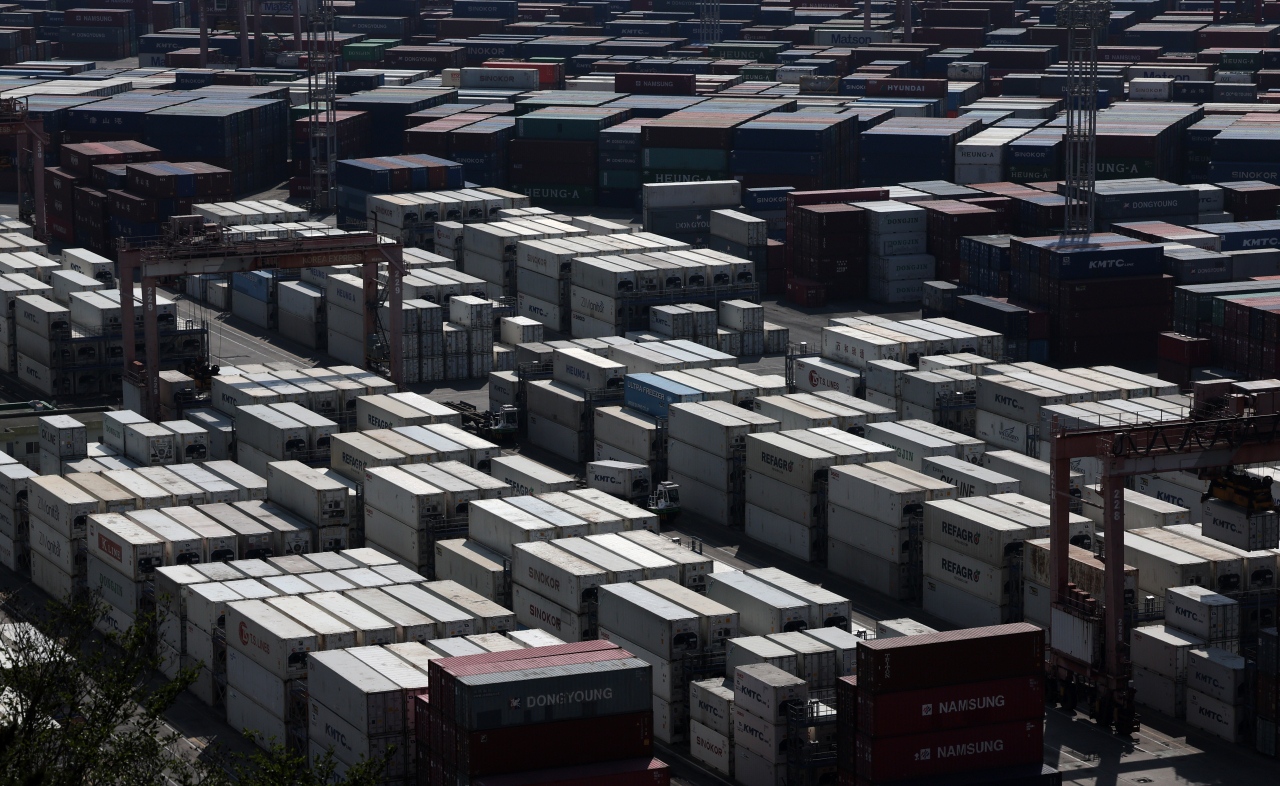KITA forecasts improved chip exports in 2nd half
By Song Seung-hyunPublished : May 30, 2023 - 15:49

South Korea's semiconductor industry, which has been experiencing repeated downturns since August last year, is expected to revive in the latter half of the year, a Korean trade lobby group said on Tuesday.
“I anticipate that our semiconductor industry will recover, reaching the level of the second quarter of last year by the fourth quarter. I expect that production cutbacks will be reversed and the overall economy will improve, particularly with the reopening of China playing a significant role in this positive trend,” Korea International Trade Association Vice Chairman Jeong Marn-ki said during a press conference held in Samseong-dong, Seoul.
KITA's positive outlook about the semiconductor industry in the second half of 2023 aligns with the Bank of Korea's expectations, as stated in a report by the latter released on Monday, which anticipated China's reopening gradually leading to the recovery of the Korean chip industry.
Korea reached over $10 billion in monthly semiconductor exports for 17 consecutive months, from May 2021 to September 2022. However, starting from August 2022, semiconductor exports have been suffering from a prolonged downturn.
According to KITA, semiconductor exports have continued to decline significantly for five consecutive months this year, with on-year decreases of 44.5 percent in January, 42.5 percent in February, 34.5 percent in March, 41.0 percent in April and 35.5 percent from May 1 to 20.
In terms of semiconductor product categories, memory chips experienced a larger decline compared to non-memory chips.
In terms of regions, the decline in semiconductor exports was significant in major export destinations such as China, Vietnam and the US.
Also, the ongoing decline in semiconductor exports has caused the proportion of semiconductors in Korea's total exports to drop to 13.4 percent for January to April period.
This is the first time since 2016 that the semiconductor share in South Korea's overall exports has dropped below 15 percent.
Regarding this figure, Jeong emphasized that the country has long been excessively dependent on semiconductors, so the current proportion that chips account for in the total exports seems to be "normal."
Jeong also acknowledged the sluggishness in Korea's overall exports thus far during the press conference.
Korea's total exports from Jan 1 to May 20 showed a 13.5 percent decrease on-year, and imports also decreased by 6.6 percent.
As a result, the trade balance during this period showed a deficit of $29.5 billion, according to KITA.
Additionally, until last month, the monthly trade deficit had been steadily decreasing. However, this trend did not continue in May.
The trade deficit reached a peak in January of $12.5 billion, but showed improvement in February ($5.2 billion), March ($4.6 billion) and April ($2.6 billion). Nonetheless, during the period of May 1 to May 20, the trade deficit increased again to $4.3 billion.







![[Graphic News] More Koreans say they plan long-distance trips this year](http://res.heraldm.com/phpwas/restmb_idxmake.php?idx=644&simg=/content/image/2024/04/17/20240417050828_0.gif&u=)
![[KH Explains] Hyundai's full hybrid edge to pay off amid slow transition to pure EVs](http://res.heraldm.com/phpwas/restmb_idxmake.php?idx=644&simg=/content/image/2024/04/18/20240418050645_0.jpg&u=20240419100350)






![[From the Scene] Monks, Buddhists hail return of remains of Buddhas](http://res.heraldm.com/phpwas/restmb_idxmake.php?idx=652&simg=/content/image/2024/04/19/20240419050617_0.jpg&u=20240419175937)

![[KH Explains] Hyundai's full hybrid edge to pay off amid slow transition to pure EVs](http://res.heraldm.com/phpwas/restmb_idxmake.php?idx=652&simg=/content/image/2024/04/18/20240418050645_0.jpg&u=20240419100350)

![[Today’s K-pop] Illit drops debut single remix](http://res.heraldm.com/phpwas/restmb_idxmake.php?idx=642&simg=/content/image/2024/04/19/20240419050612_0.jpg&u=)